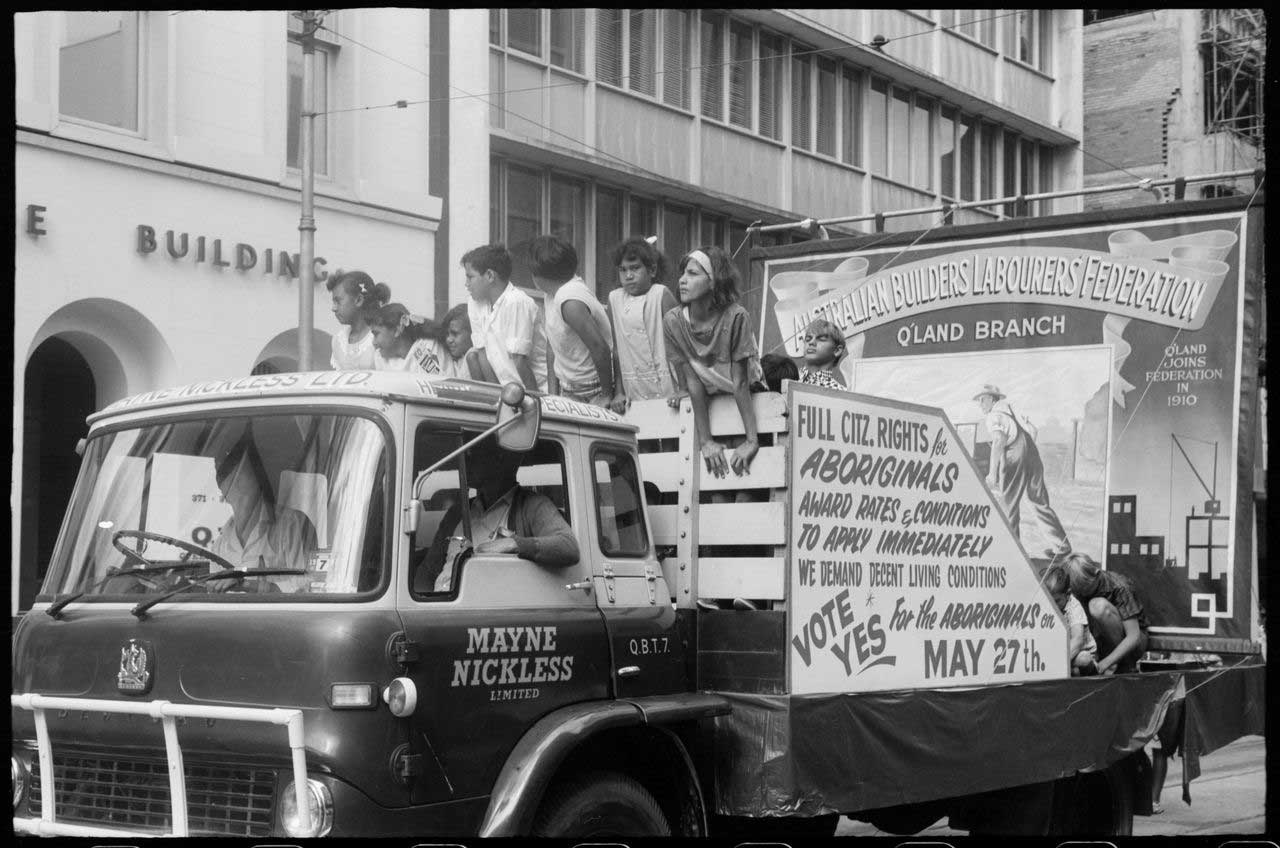On 27 May 1967, ninety percent of the Australian population voted 'yes' in a referendum to change the Australian Constitution. As a result, Indigenous Australians were now included in the census and the federal government had the power to make laws for Aboriginal and Torres Strait Islander affairs.
2017 marks 50 years since this auspicious moment in Australia’s history.

What was it about?
The referendum set out to amend two sections of the Constitution:
Section 51 (xxvi):
The Parliament shall, subject to this Constitution, have power to make laws for the peace, order, and good government of the Commonwealth with respect to:
...The people of any race, other than the aboriginal people in any State, for whom it is necessary to make special laws.
Section 127:
In reckoning the numbers of the people of the Commonwealth, or of a State or other part of the Commonwealth, aboriginal natives should not be counted.
Following the referendum, the words "…other than the aboriginal people in any State…" in section 51(xxvi) and the whole of section 127 were removed, thus allowing Indigenous people to be included in the census, and giving federal Parliament the power to make laws in relation to Indigenous people.
What it was not about
The referendum:
- did not give Aboriginal people the right to vote. This right had existed since 1962.
- did not grant them citizenship. By the time of the referendum, most of the specific federal and state laws discriminating against Aboriginal people had been repealed.
- was not about equal rights. The constitutional change would not impact at all on laws governing Aboriginal people.
How did the referendum come about?
Campaigning for a referendum started a decade earlier in 1957 when Jessie Street, Faith Bandler, Doug Nicholls, Bill Onus and others announced a petition to campaign for a referendum to amend the Constitution to remove the discriminatory clauses. Although this particular campaign failed to sway the Menzies Government, it did succeed in drawing together like-minded activists from across the country and contributed to the foundation in February 1958 of the Federal Council for Aboriginal Advancement (FCAA), renamed the Federal Council for the Advancement of Aborigines and Torres Strait Islanders (FCAATSI) in 1964.
These activists continually campaigned until their voices were heard, at one point sending a petition a day to Parliament to keep the issue alive. This persistence resulted in more than 100, 000 signatures in favour of constitutional change.
In February of 1967, a newly elected government under the leadership of Harold Holt announced a referendum was to be held in May of that year. This decision energized the FCAATSI's campaigners into winning the ‘Yes’ vote.
!['Right Wrongs Write Yes for Aborigines on May 27' poster, [1967]](/files/40733/yes.jpg)
Campaigning for ‘Yes’
The campaign was not going to be easy. Prior to 1967, Australian voters had agreed to only four of the twenty-four constitutional referendum proposals put to them since Federation, and there was a concern as to whether the predominantly white electorate would vote in favour of Aborigines.
With few resources of their own, the Federal Council (FCAATSI) relied on support from church and community groups, the Australian Labor Party, and trade unions. Much of the financial, organisational and political support came from unions. The Communist Party also lent its support.
The FCAATSI's small band of Indigenous leaders played a major role in galvanising support within the white community. In Queensland, activists Kath Walker (Oodgeroo Noonuccal) and Joe McGuinness were especially prominent, addressing meetings, lobbying politicians and giving press, radio and television interviews.
The campaign was an overwhelming success. The Constitution was changed by the Constitution Alteration (Aboriginals) 1967 and an Office of Aboriginal Affairs was set up.
However, success was short-lived as little was done to improve the position of Indigenous people in Australia and the Holt Government announced in September 1967 that it had no intention of introducing any further measures especially to assist Aborigines. It would not be until the election of the Whitlam Labor Government in 1972 that the referendum result led to substantive improvements for Indigenous Australians.
Contribute to the story
This blog post is based on an earlier online exhibition that draws upon the following collections held in the Fryer Library. We welcome your comments. Please visit us on Facebook or Twitter to contribute to the story.